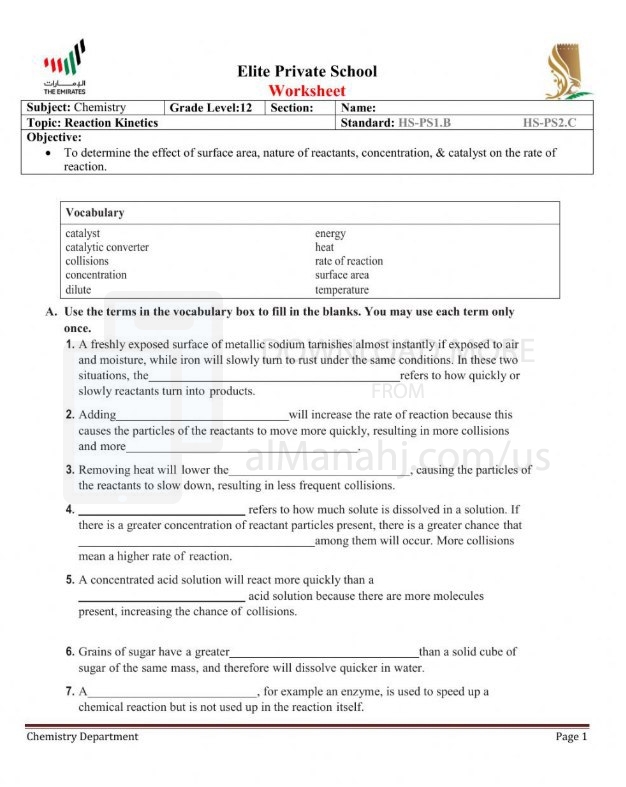File info: In chemistry, reaction rate refers to the speed at which a chemical reaction takes place. It measures how quickly reactants are converted into products over a specific period of time. The reaction rate is influenced by various factors and can be determined by measuring the change in concentration of reactants or products per unit of time.
The reaction rate is typically expressed as the change in concentration of a particular reactant or product per unit of time. It can be calculated using the formula:
Reaction Rate = (Change in Concentration of Reactant or Product) / (Time)
Factors Affecting Reaction Rate:
Several factors can affect the rate at which a chemical reaction occurs:
1. Concentration of Reactants: Generally, an increase in the concentration of reactants leads to a higher reaction rate. This is because a higher concentration means more reactant particles are available, increasing the likelihood of collisions and successful reactions.
2. Temperature: Increasing the temperature usually increases the reaction rate. This is because higher temperatures provide reactant particles with more kinetic energy, leading to more frequent and energetic collisions.
3. Surface Area: For reactions involving solid reactants, increasing the surface area of the solid can accelerate the reaction rate. This is because a larger surface area provides more contact points for reactant particles, increasing the frequency of collisions.
4. Catalysts: Catalysts are substances that can increase the reaction rate without being consumed in the reaction. They work by providing an alternative reaction pathway with lower activation energy, allowing the reaction to proceed more rapidly.
5. Pressure (for gases): Increasing the pressure of gaseous reactants can enhance the reaction rate. Higher pressure leads to a greater number of collisions between gas particles, increasing the chances of successful reactions.
6. Nature of Reactants: The chemical nature of the reactants can significantly influence the reaction rate. Some reactions occur more readily due to the inherent reactivity or stability of the reactant molecules.
It's important to note that reaction rates are experimentally determined and can vary depending on the specific conditions and reaction mechanism. Reaction rates are essential in understanding the kinetics of chemical reactions and are crucial for optimizing reaction conditions in various applications, such as industrial processes, pharmaceutical development, and environmental studies. |
